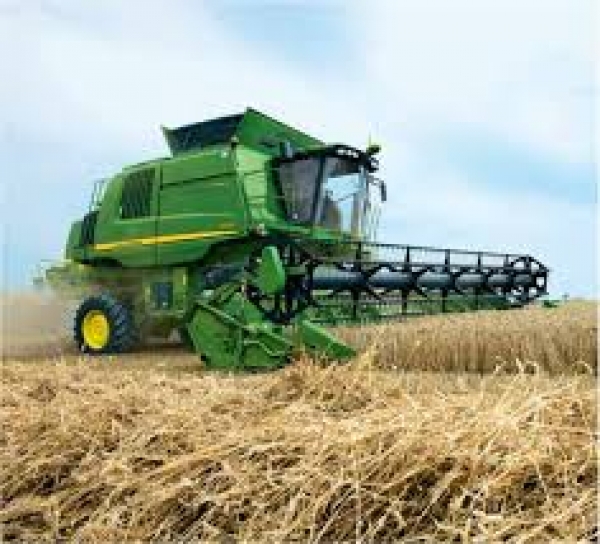Combine harvester
------------------
The combine was invented in the United States by Hiram Moore in 1834, and early versions were pulled by horse or mule teams. In 1835, Moore built a full-scale version and by 1839, over 50 acres of crops were harvested. By 1860, combine harvesters with a cutting width of several metres were used on American farms. In 1882, the Australian Hugh Victor McKay had a similar idea and developed the first commercial combine harvester in 1885, the Sunshine Harvester.
Combines, some of them quite large, were drawn by mule or horse teams and used a bullwheel to provide power. Later, steam power was used, and George Stockton Berry integrated the combine with a steam engine using straw to heat the boiler. Tractor-drawn, combines became common after World War II as many farms began to use tractors. These combines used a shaker to separate the grain from the chaff and straw-walkers (grates with small teeth on an eccentric shaft) to eject the straw while retaining the grain. Early tractor-drawn combines were usually powered by a separate gasoline engine, while later models were PTO-powered. These machines either put the harvested crop into bags that were then loaded onto a wagon or truck, or had a small bin that stored the grain until it was transferred to a truck or wagon with an auger.

Combine Harveter

